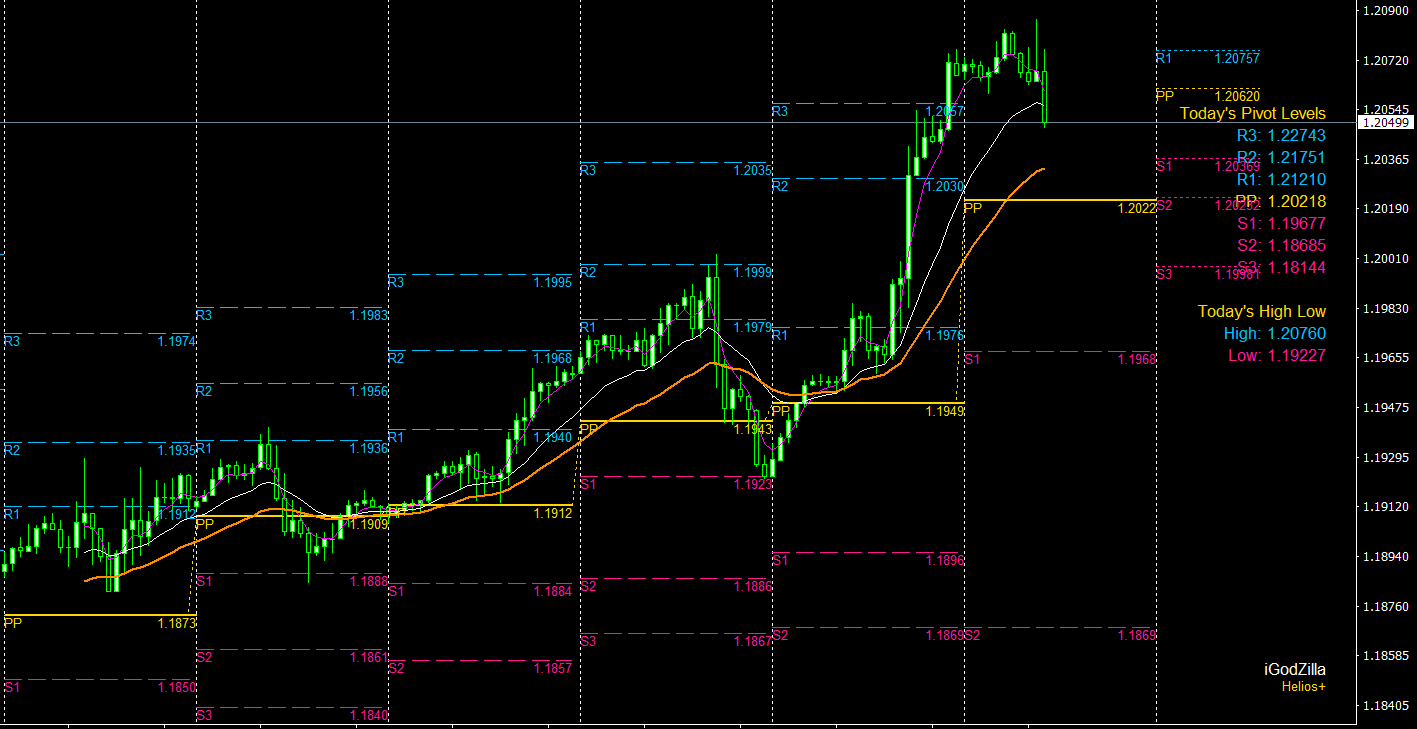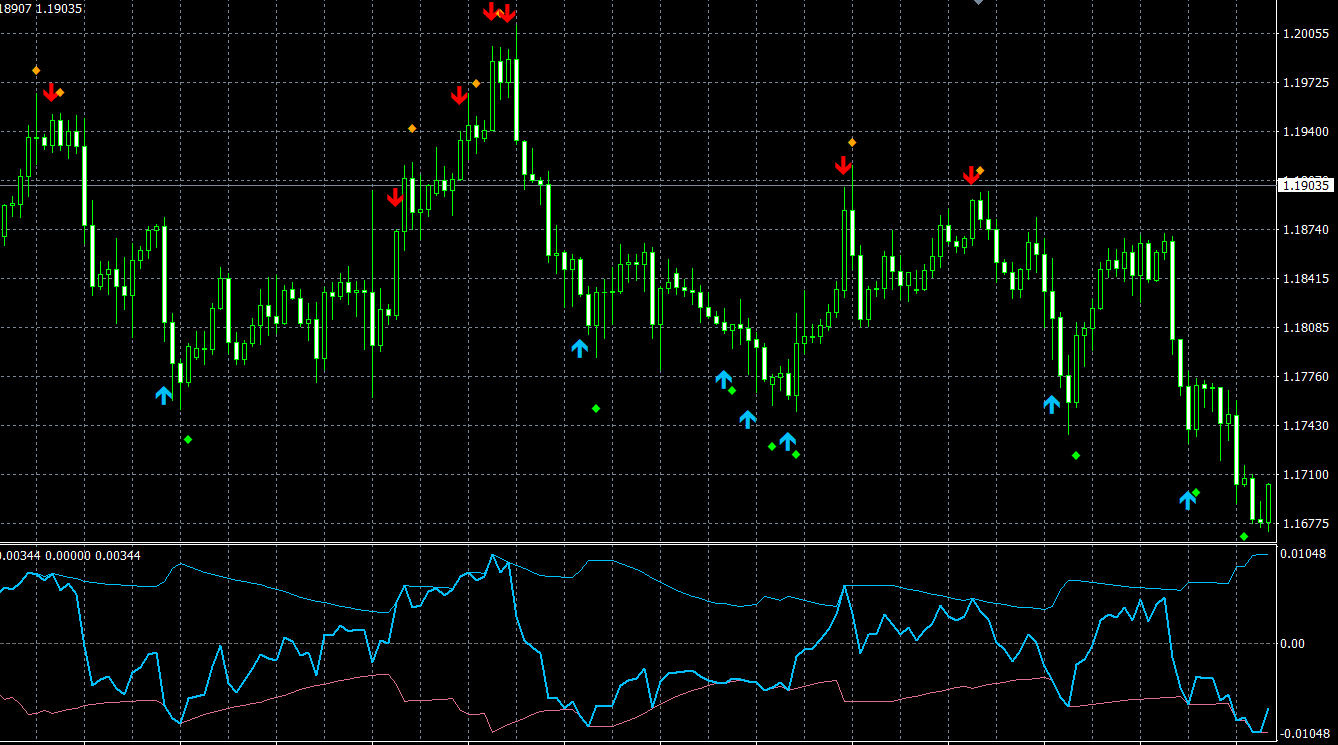Pivot points are essential tools in forex trading, providing valuable insights into potential support and resistance levels. These levels can help traders identify potential trading opportunities and manage risk more effectively. This article will discuss what pivot point indicators are, their importance in forex trading, and how traders can effectively use them to enhance their trading strategies.
What are Pivot Point Indicators?
Pivot point indicators are technical analysis tools used to calculate potential support and resistance levels in the market. These levels are derived from the previous day’s high, low, and closing prices and are used to predict potential turning points in the market. There are several methods for calculating pivot points, including the standard (or classic) pivot point formula, Woodie’s pivot points, Camarilla pivot points, and Fibonacci pivot points.
- Standard Pivot Points
Standard pivot points, also known as classic pivot points, are calculated using a simple formula that focuses on the high, low, and closing prices of the previous trading session to identify the central pivot point. The primary purpose of standard pivot points is to identify potential support and resistance levels in the market, which can act as entry and exit points for trades.
The standard pivot point formula calculates the central pivot point (P) using the following equation: P = (High + Low + Close) / 3. From this central pivot point, additional support (S) and resistance (R) levels are derived. The first support and resistance levels are calculated as follows: R1 = (2 * P) – Low, and S1 = (2 * P) – High. Further levels can also be calculated, but the first levels are the most commonly used.
- Woodie’s pivot points
Woodie’s pivot points are a variation of the classic pivot point calculation method, developed by trader Ken Wood, also known as Woodie. This method incorporates a unique formula that places more emphasis on the current trading session’s open price, in addition to the high, low, and closing prices of the previous trading session.
The main difference between the standard pivot point formula and Woodie’s pivot points is the inclusion of the current session’s open price in the calculations. This modification aims to provide a more accurate representation of the market’s sentiment, as it takes into account the most recent price data.
- Camarilla Pivot Points
Camarilla pivot points are a variation of the classic pivot point calculation method, developed by trader Nick Stott in the 1980s. This method uses a unique formula that takes into account the high, low, and closing prices of the previous trading session, along with a set of specific multipliers, to calculate potential support and resistance levels.
The main difference between the standard pivot point formula and Camarilla pivot points is the use of these multipliers in the calculations. This results in four support (S1-S4) and four resistance (R1-R4) levels, with R3, R4, S3, and S4 being the most important levels for traders.
- Fibonacci Pivot Points
Fibonacci pivot points are a variation of the classic pivot point calculation method, incorporating the principles of the Fibonacci sequence into the calculations. This method uses the high, low, and closing prices of the previous trading session along with Fibonacci ratios (typically 0.382, 0.618, and 1) to determine potential support and resistance levels.
The main difference between the standard pivot point formula and Fibonacci pivot points is the use of Fibonacci ratios in the calculations. The central pivot point (P) is calculated using the same formula as the standard method: P = (High + Low + Close) / 3. However, the support (S) and resistance (R) levels are derived by applying the Fibonacci ratios to the range (High – Low).
For example, the first support level (S1) is calculated as P – (0.382 * Range), while the first resistance level (R1) is calculated as P + (0.382 * Range). Additional support and resistance levels are determined using the other Fibonacci ratios (0.618 and 1).
The Importance of Pivot Point Indicators in Forex Trading
Pivot point indicators play a crucial role in forex trading, offering valuable insights into potential trading opportunities and market dynamics. Some of the benefits of using pivot point indicators include:
- Identifying Key Support and Resistance Levels: Pivot point indicators help traders identify potential areas of support and resistance, which can act as potential entry and exit points for trades.
- Enhancing Trading Strategies: Incorporating pivot point indicators into a trading strategy can improve its effectiveness, allowing traders to better identify potential trading opportunities and manage risk.
- Facilitating Quick Decision-Making: Pivot point indicators provide real-time information about potential turning points in the market, enabling traders to make rapid decisions and capitalize on fleeting opportunities.
- Complementing Other Technical Analysis Tools: Pivot point indicators can be used in conjunction with other technical analysis tools, such as trend lines, moving averages, and oscillators, to create a well-rounded trading strategy.
How to Use Pivot Point Indicators in Forex Trading
Effectively utilizing pivot point indicators in forex trading can help traders identify potential entry and exit points, as well as assess market conditions and manage risk. Here are some tips for using pivot point indicators in your trading strategy:
- Choose the Right Pivot Point Method: Select the pivot point calculation method that best suits your trading style, objectives, and risk tolerance. Consider using a combination of methods to gain a more comprehensive understanding of potential support and resistance levels.
- Apply the Pivot Point Indicator: Add the pivot point indicator to your price chart, adjusting the settings as necessary to suit your trading style and the specific currency pair.
- Monitor Pivot Point Levels: Regularly check the calculated pivot point levels, paying close attention to any potential support and resistance areas.
- Combine Pivot Points with Other Technical Tools: Use pivot point indicators in conjunction with other technical analysis tools, such as trend lines, moving averages, and oscillators, to identify potential trading opportunities and manage risk more effectively.
Using Pivot Point Indicators in Forex Trading
When using pivot point indicators in forex trading, it’s essential to incorporate them into a comprehensive trading strategy that includes risk management techniques and other technical analysis tools. Here are some steps to effectively utilize pivot point indicators in your trading approach:
- Determine the Appropriate Pivot Point Calculation Method: Choose the pivot point calculation method that best aligns with your trading style and objectives. Some traders may prefer the simplicity of the standard pivot point formula, while others may opt for the more nuanced Fibonacci or Camarilla methods.
- Calculate Daily Pivot Point Levels: Using your chosen calculation method, determine the daily pivot point levels for the currency pair you are interested in trading. These levels will serve as potential support and resistance areas throughout the trading day.
- Analyze the Market: Examine the price action around the calculated pivot point levels, paying close attention to any potential entry and exit points for trades. Look for price reactions, reversals, or breakouts around these key levels.
- Incorporate Pivot Points into Your Trading Strategy: Use pivot point levels as part of your overall trading strategy, setting entry and exit criteria based on your analysis of support and resistance areas. Be sure to include stop loss orders and take profit levels as dictated by your risk management strategy.
- Combine Pivot Points with Other Technical Analysis Tools: Use pivot point indicators alongside other technical analysis tools, such as trend lines, moving averages, and oscillators, to create a well-rounded and comprehensive trading strategy. This can help you confirm potential trading opportunities and improve your overall decision-making process.
- Monitor and Adjust Your Strategy: Regularly review your trading performance and make any necessary adjustments to your pivot point-based trading strategy based on your results and changing market conditions. Continuously refine your approach to ensure it remains effective and aligned with your objectives.
Conclusion
Pivot point indicators are invaluable tools for forex traders looking to better understand and capitalize on market dynamics. By effectively utilizing pivot point indicators, traders can identify key support and resistance levels, optimize their trading strategies, and better manage risk. Combining pivot point indicators with other technical analysis tools can further enhance a trader’s ability to navigate the complexities of the forex market, ultimately contributing to improved trading performance and profitability. As with any trading tool, practice and ongoing education are key to mastering the use of pivot point indicators and reaping the benefits they offer in forex trading. With the right combination of pivot point indicators and a disciplined approach, traders can successfully navigate the ever-changing world of forex trading and enhance their chances of success.



